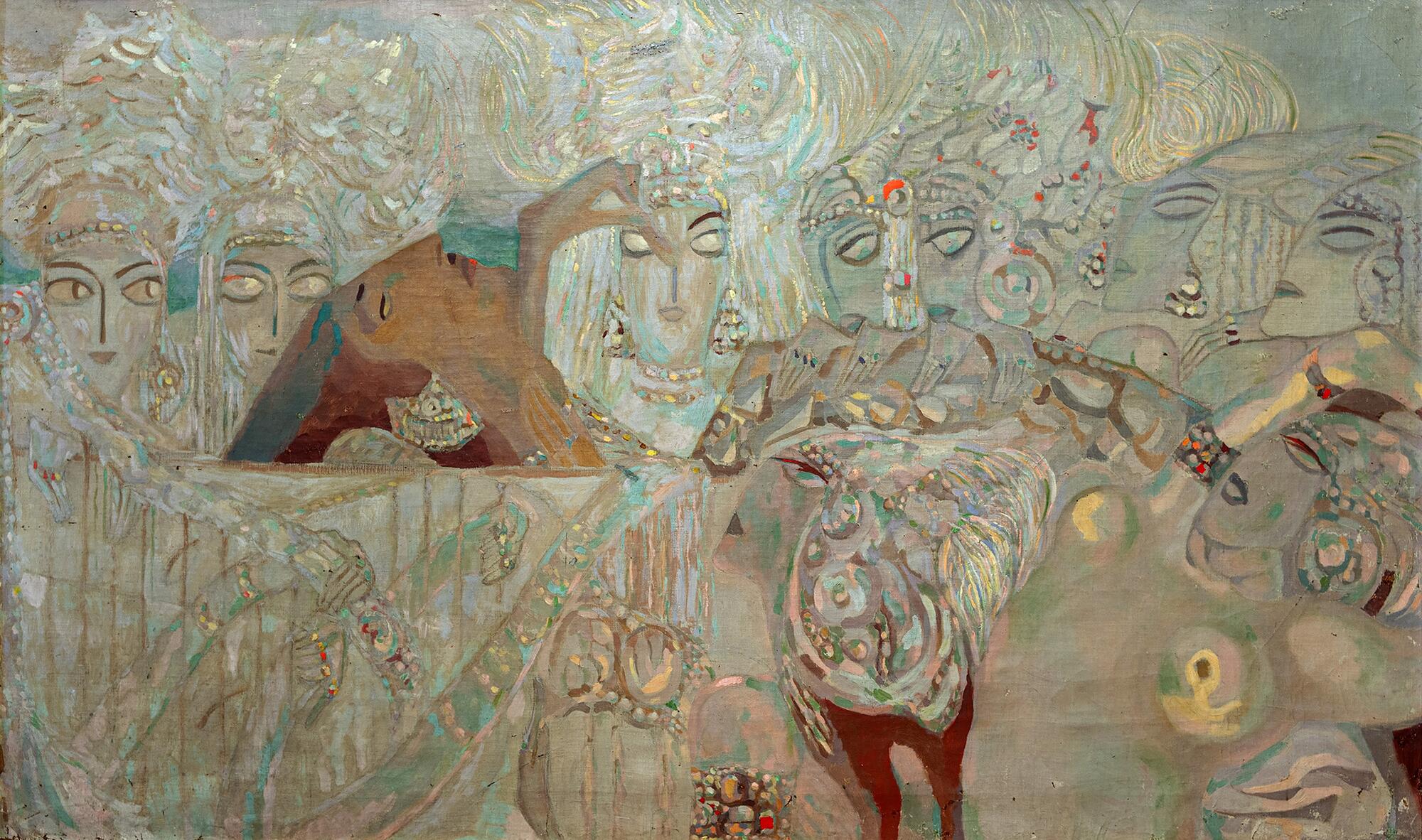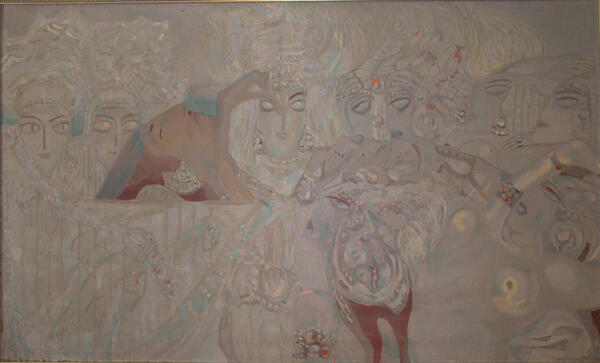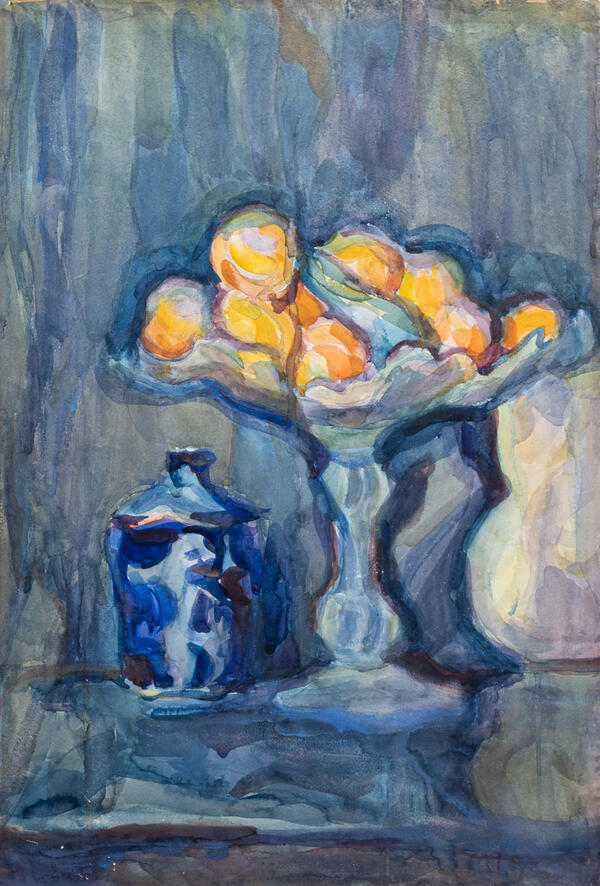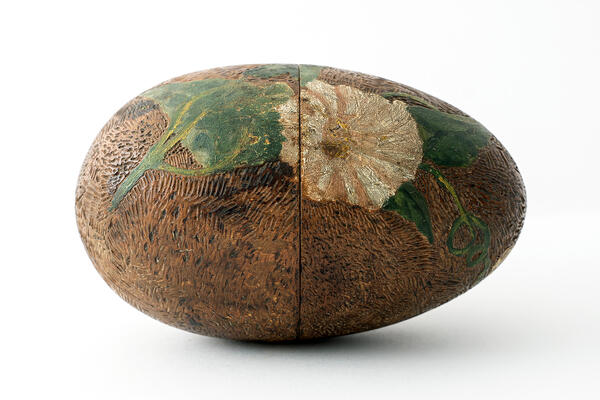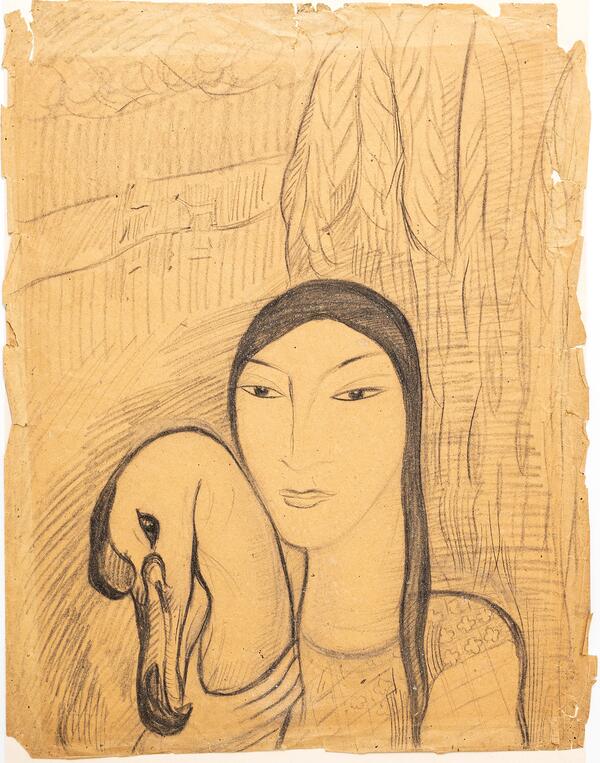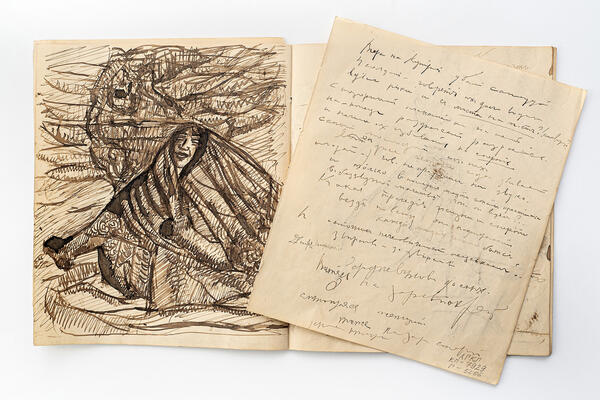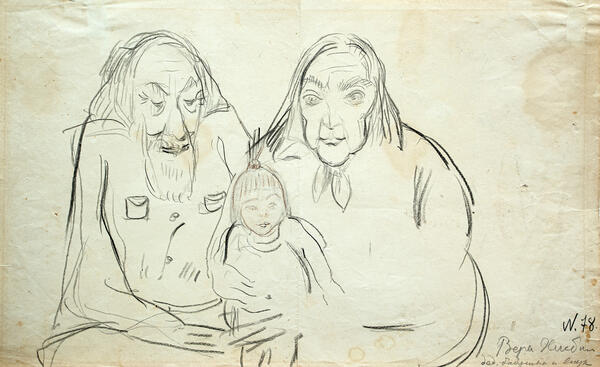In 1856, Alexander Sergeyevich Dargomyzhsky’s opera “Rusalka”, a psychological social drama inspired by a fabulous and poetic plot, was successfully premiered in St. Petersburg. The composer wrote a libretto based on an unfinished drama by Alexander Pushkin; scenery sketches were made by Viktor Mikhaylovich Vasnetsov.
In subsequent years, the opera was repeatedly staged in theaters in Moscow, St. Petersburg (Leningrad), Tallinn, Minsk, Vilnius, London, Paris and other Russian and European cities.
The opera made a great impression on Vera Vladimirovna Khlebnikova. The artist captured her impressions in the painting “Mermaids” — a kind of illustration for the finale of the story. “Mermaids led by the mistress of the underwater kingdom, proud, cold, and domineering, surround the corpse of the prince, ” Ada Mikhaylovna Belyaeva said about the canvas.
Despite the coldness and imperiousness of the heroine, noted by the art critic, the work is distinguished by a bright sparkling color scheme, a synthesis of tenderness and sadness, reflections of feelings and focused contemplation. Ephemeral figures of mythical creatures seem to dissolve into a ghostly haze.
The color layer of the painting is unusually thin, the colors seem to be rubbed into the canvas, reminiscent of silk batik. The dynamic, light brushstrokes, cohesive delicate colors (ash, pearl, beigy-pink tones), the effect of “trembling air” surrounding the mermaids — all this gives the work an innate musical harmony.
Sergey Filippovich Bobkov, an expert on Vera Khlebnikova’s art, noted a certain pretentiousness in the painting, which was not typical of the artist’s later work. In addition, he emphasized the masterfully rendered “shades of white” and the “pearly palette of iridescent soft light tones” which became a characteristic feature of Vera Vladimirovna’s pictorial language.
The canvas “Mermaids” was painted in her Astrakhan period. The House Museum displays it in “Vera’s Room” among her best works. In total, the exhibition and museum funds include 16 paintings and 80 graphic works by the artist.
It was acquired by the museum from May Petrovich Miturich-Khlebnikov (Moscow) in 1978.